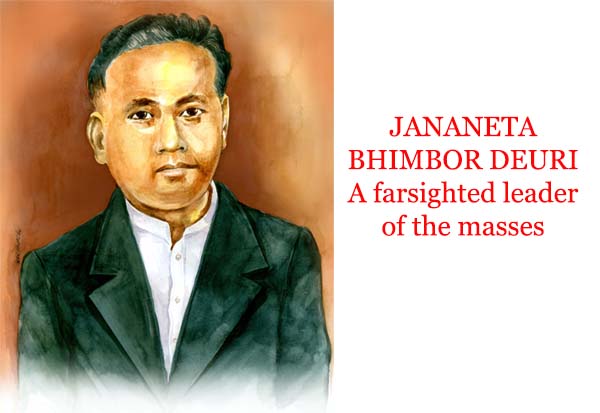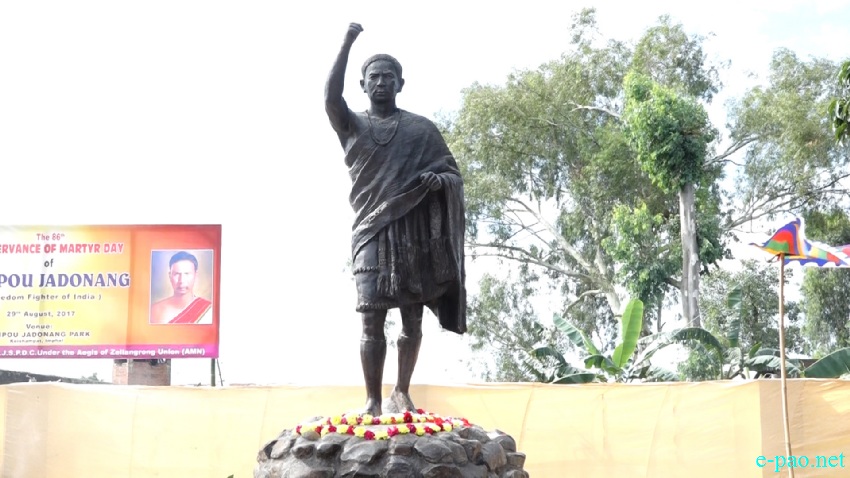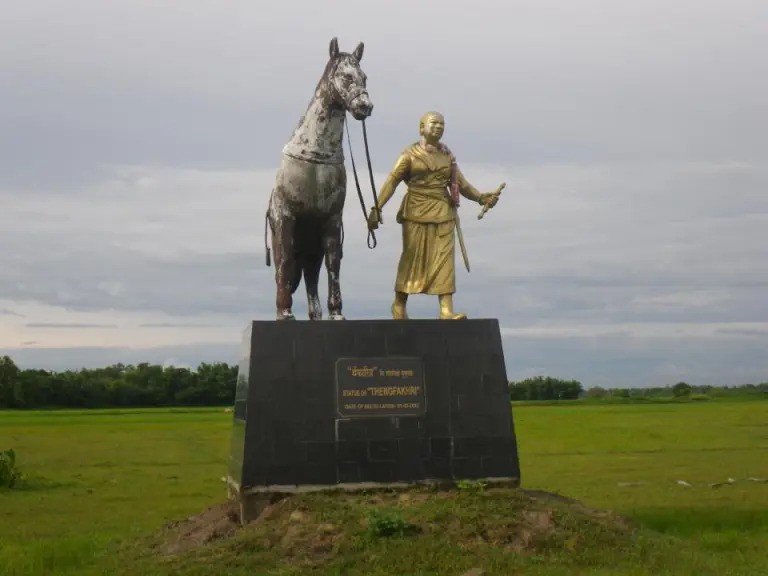One does not become great simply because of his birth in a great family. Greatness cannot be claimed; it can only be earned through exemplary acts and deeds. There had been many such geniuses born amongst us but they seldom got the recognition and respect from our society and many of them died incognito. In our country, especially in Assam and the North East, a man of worth is never given the recognition he deserves until and unless people from foreign lands and other parts of our country bestow honour to him. Many greats of our country had to endure this trauma, but since they were true greats they were never disheartened and went ahead with their self appointed goal in life. As an example we can cite the case of Swami Vivekananda, who after becoming a Sanyasi (Monk) received only ridicule and neglect from the people of Kolkata. The same was the case of Nobel laureate Rabindra Nath Tagore. His poems were ridiculed and his usage of Bengali language was harshly contested. So called patrons of Bengali language accused Tagore of distortion of the language. Receipt of Nobel Prize saved him from further ignominy and ridicule. Same was the lot of Bhimbor Deuri, a great visionary and mass leader, a true lover of Assam and its inhabitants, but he never received the limrlight he deserved.
Bhimbor Deuri was born on 16th May, 1903 and died on 30th November 1947. Today we are paying homage to a visionary leader who advocated and promoted development of janajatis with an inclusive idea of vibrant and harmonious Assam. The idea of Assam that has a preeminent place in free India with extensive and universal development of every component of the people, that will uphold identity and glorious history of janajatis, that will remain impregnable from Muslim invaders and encroachers.
In 1933 Bhimbor Deuri along with prominent janajati leaders formed Assam Backward Plains Tribal League. As a secretary of the Tribal League he placed demands for reservation of assembly seats for the janajatis to the British Government of Assam and in response to it in 1935 out of 104 seats in the Legislative Assembly four seats were reserved for the janajatis. He expressed his satisfaction over the representation of janajatis in the Legislative Assembly according to the1935 Act. He stated that the Act for the first time introduced representation of the tribal people both plains and hills in the legislature. This has arisen hopes and feeling which itself was a great contribution towards the goal to which not only Assam but India as a whole was aspiring for political achievement and advancement.
In the conference of the Tribal League held in Kamrup district in 1938, Bhimbor Deuri clearly stated that while raising the demands for janajatis one should not forget that the janajatis too were apart of the Assamese society. He further firmly believed that only the improvement of the condition of the Assamese community could improve the lot of the janajatis. He highlighted symbiosis between greater Assamese society and the smaller janajati groups symbolically “The Luit exists as Luit because of its lively tributaries and the tributaries are flowing because of the Luit. Their existence is mutually dependent on each other…”
In 1939 Bhimbor Deuri was nominated to the Assam Legislative Council by the Governor. He focused on two important issues confronting janajatis, the first one being pts all-round backwardness and secondly the problem created by the illegal migration of Muslim to Assam from erstwhile East Pakistan. .
The Tribal league from the beginning wanted to implement the Line System which was introduced in 1920s throughout Assam because Line System according to Tribal League would protect the tribal lands from the inflow of the land hungry Muslim encroachers. The influx began at a rapid rate towards the western part of Assam to take the advantage of sparse population and abundant cultivable land of the countryside. This migration resulted in inflation of the Muslim population percentage to 20% in the bordering districts during the early part of the 19th century. These invading Muslims subsequently gained the land rights which resulted in creating their own cultural, traditional and linguistic identity. This policy turned out to be the prime cause of large scale influx in the subsequent years. These migrants were mainly from the Mymensingh, Rangpur, Bogra and Pabna areas. This disturbing phenomena was first officially revealed by the Census Report of 1911.These Muslim migrants subsequently came in direct confrontation with the indigenous people of Assam especially with the Mising community on the right over the riverine areas. This confrontation later spread across the state with all other communities over all types of cultivable land. To combat indiscriminate settlement of these migrants the “Line System” was introduced by the British government in 1920. However in reality this system was never fruitful as observed in the Line System Enquiry Committee (LSEC) Report of 1938.
The influx of Muslim encroachers resulted in continuous extinction of many tribal villages. The various janajati groups under the banner of Tribal League were organized to protect their right over land, language and culture. Such a socio-political aggression on the janajati groups of Assam was aided and abetted primarily by the British Government under the pretext of enhancement of agricultural outputs and land revenue.
The political developments since 1937, impact of Second World War and Quit India movement saw fluctuations in the government composition in Assam. Congress under Shri Gopinath Bardoloi and Muslim League under Mohammad Sadulla formed governments in Assam during this period with Md. Sadulla as the Prime/Cief Minister of Assam. This was the most unfortunate happening in the history of Assam.
Bhimbor Deuri termed the policy adopted by Saadulla Governments as a policy of invitation of new immigrants. He further commented that the decision on the question of the Line System was delayed by the Sadullah Government because of their underlying motive though the entire indigenous people of the Assam Valley had been pressing for such a solution. In the budget session of 1940 he stated that Saadulla Government wants to satisfy indigenous people by advocating protection and at the same time provided room for settling Muslim immigrant population. He further highlighted the difficulty that there was no end to the number of Muslim immigrant population. Such immigrants were being allotted large chunks of land in different districts of Assam Valley.
The Sadullah government opened up reserved lands, de-reserved forests, and professional grazing reserves, displacing the indigenous people of Assam. It also entailed paying a premium for occupying the land. Sadullah Government always wanted to abolish Line system and to get land rights which they propagated as the ‘Gift of God’ to be shared by everyone. It never provided protection to janajati (tribal) belts. After the revoking of the Line System by Saadulla Government the miseries of the janajati population knew no bounds. Muslim Immigrants could buy and own land in the plains and settle there without any restrainrt. Bhimbor Deuri suggested for creation of ’Tribal Belts and Blocks’ and it was accepted in the assembly with the support of Gopinath Bardoloi. He felt that only ’Tribal Belts and Blocks’ could provide protection to the backward tribal people of Assam. As a result in 1947 Gopinath Bardolai Government created 33 Tribal Belts and Blocks based on Line System by amending Assam Land and Revenue Regulation Act 1886 so that tribal land alienation could be stopped.
Bhimbor Deuri vehemently opposed the ulterior motive of Saadulla to annex Assam to Pakistan. On 11th February 1946, Gopinath Bardoloi Ministry was formed and it was during this period that the Cabinet Mission visited India. It proposed to divide India into three groups A, B and C where Assam was to be enlisted with category C along with the Muslim dominated area of Bengal. He issued a press release in the newspapers like ’DainikAsomiya’ and ’Sadiniya Asomiya’ on 6th August and 10th August, 1946. Through his editorials he made the people of Assam aware of the Grouping System of Cabinet Mission as a scheming policy to club Assam with Pakistan instead of Hindustan. Tribal League was of firm conviction that they would remain part of Hindustan rather than Pakistan. Every leader of the League supported Bhimbar Deuri and he was unanimously elected leader to voice their decision before the Governor General. Tribal League with Bhimbor Deuri accompanied by Gopinath Bardoloi met Mahatma Gandhi to apprise him of their solidarity and opposition to the bid for bifurcation of Assam. Bhimbor Deuri with his knowledge of and pride in Assam’s history, had challenged Mohammad Ali Jinnah by saying that seventeen Mughal onslaughts had been withstood by the Assamese and no one could annex it.
Bhimbor Deuri in a time of crisis tried his best to unite janajatis and the Assamese people during this most delicate period of Assam history. Rigorous and judicious research of 1937 to 1947 period of history of Assam will emphasise the greatness of Jananeta Bhimbor Deuri in securing not only Assam but the entire north east of our country from falling prey to the travails of partition. Jananeta Bhimbor Deuri with his efforts has safeguarded culture, tradition, heritage and future of janajtis, of Assam and of the nation.






